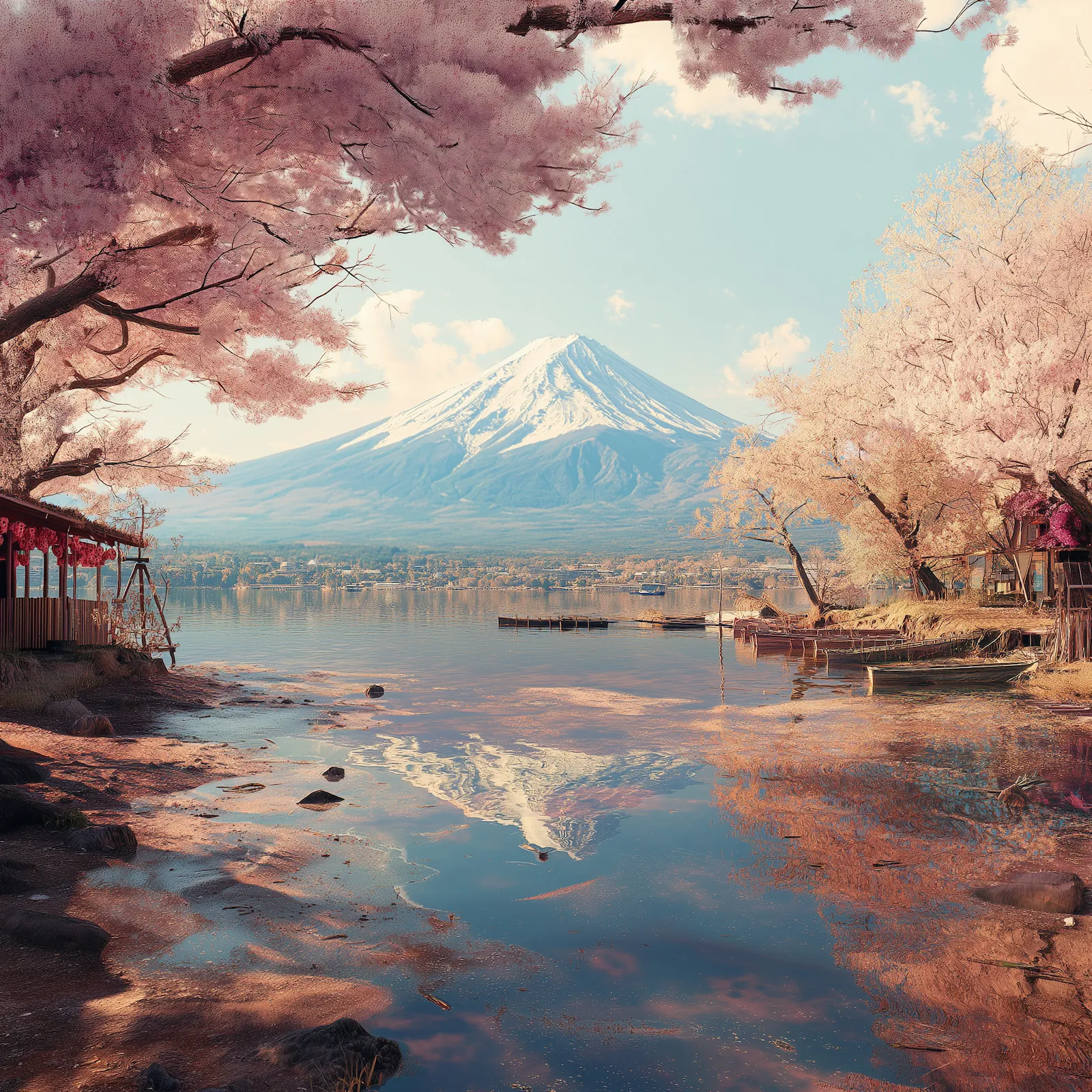
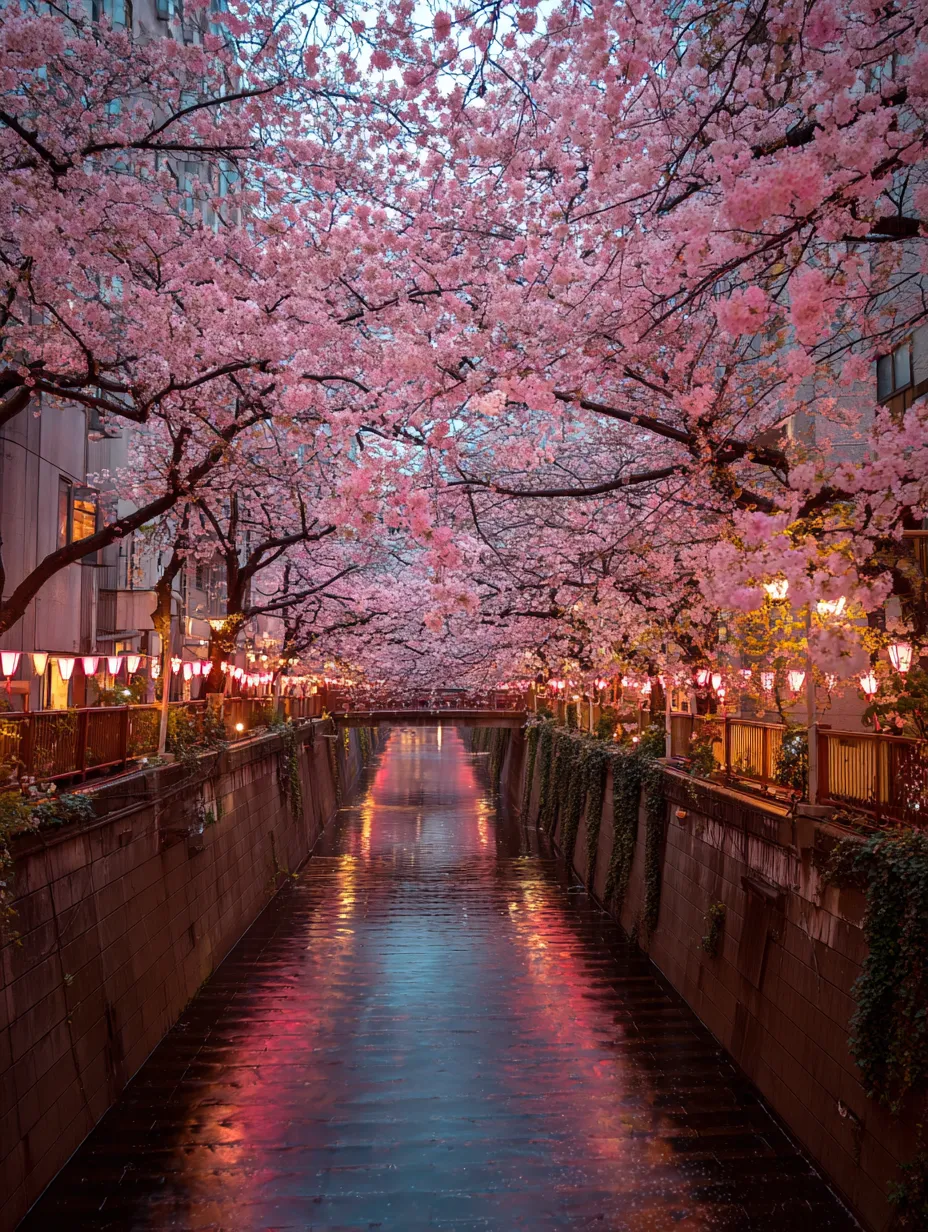
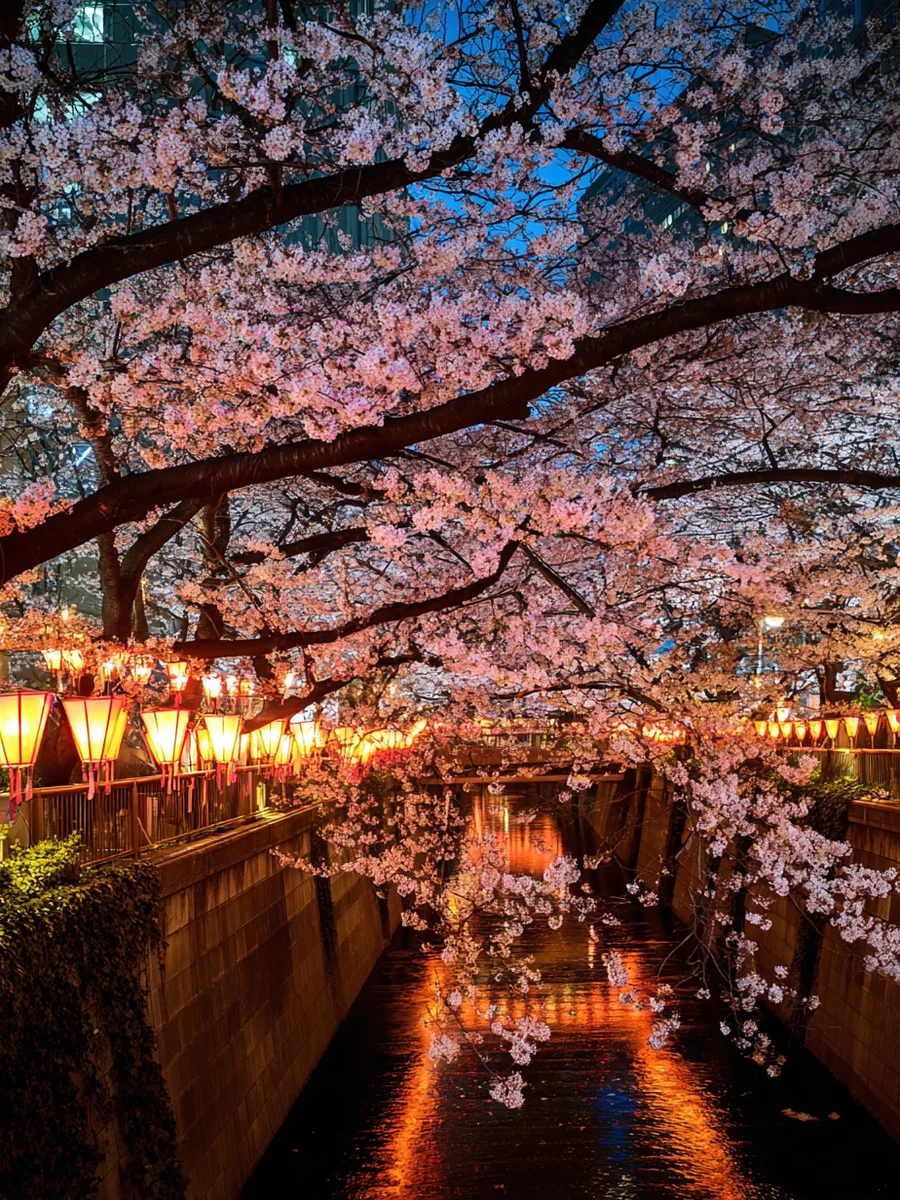
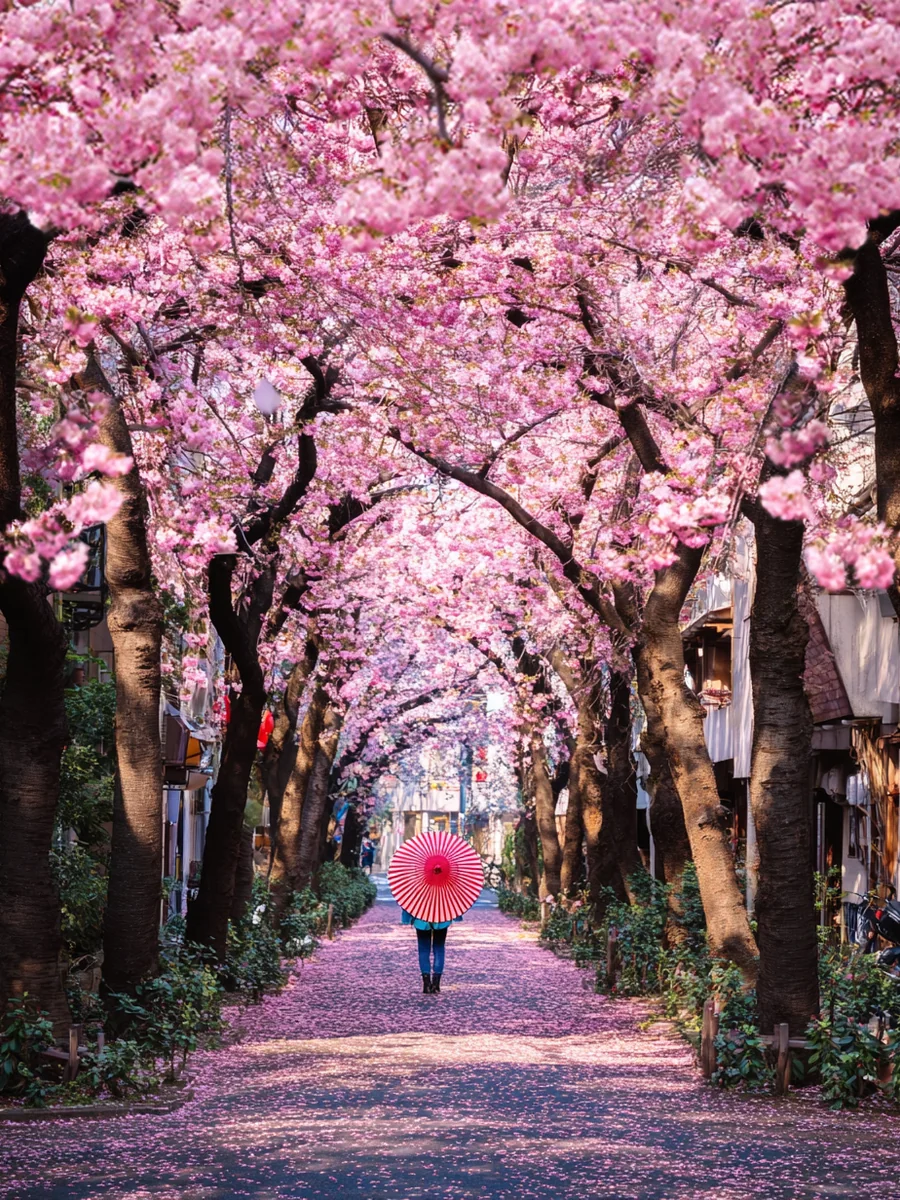
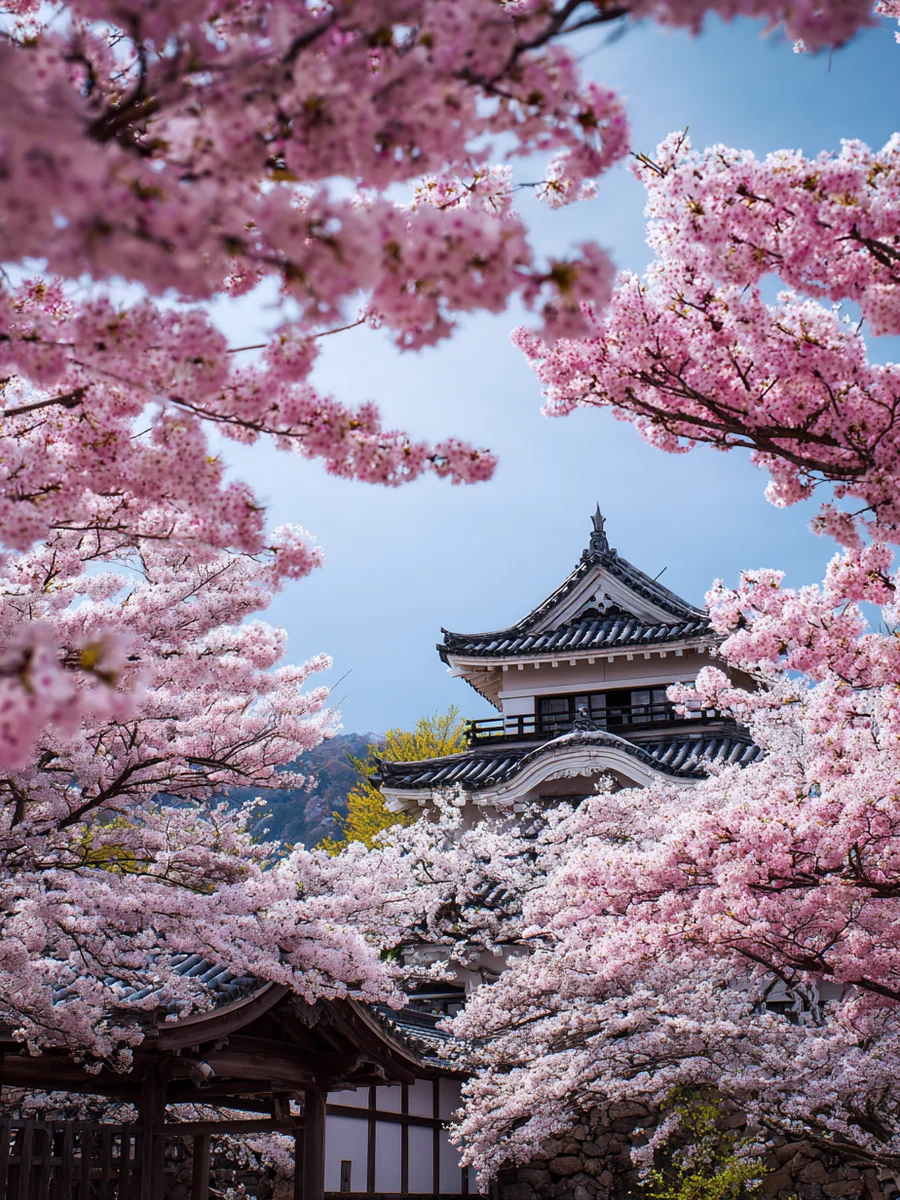
Hanafubuki: Japan's Philosophy of Impermanence
The Art of Letting Go Through Cherry Blossom Beauty
by KA's Experience Team
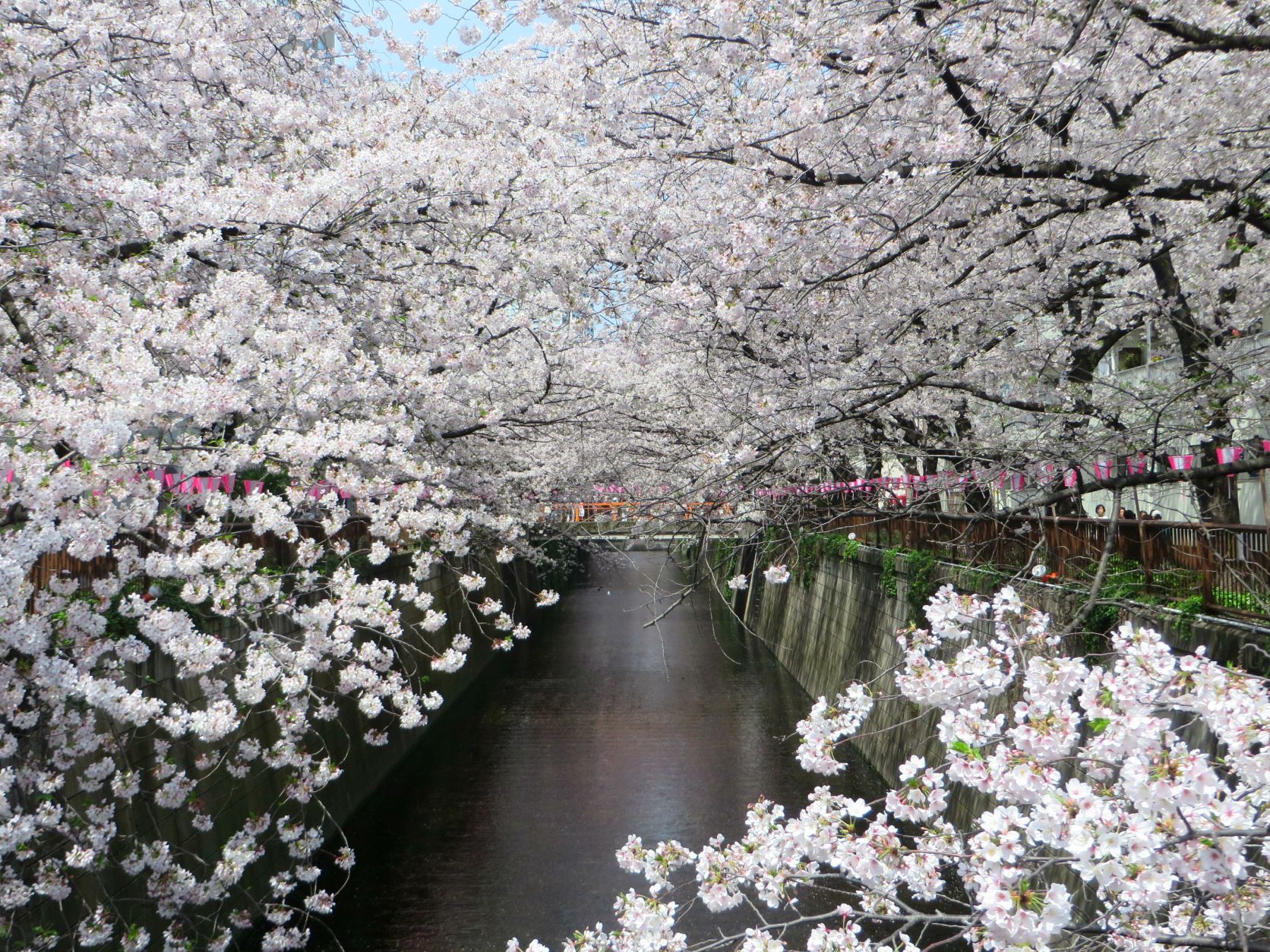
March & April
Best months to visit
October through December
Best time to book
March & April
Best months to visit
October through December
Best time to book
It's a great time to book this destination!
Experience Japan's cherry blossom season through the lens of impermanence. Follow the sakurazensen, witness hanafubuki, and discover mono no aware—the art of letting go through fleeting beauty.
We Handle Everything. You Just Show Up.
No research. No coordination. No backup plans needed. Just your perfect journey—guaranteed.
Create Your JourneyYou check your phone 96 times a day. You optimize your calendar, your inbox, your sleep. You’ve built your life around control—around holding on.
And then there’s Japan in spring.
Where 125 million people—an entire nation—synchronize their consciousness not with productivity metrics or quarterly earnings, but with the 14-day life cycle of a flower.1 Where the evening news doesn’t report stock prices; it reports the sakurazensen—the “cherry blossom front”—tracking the daily advance of blooms with the precision of a military campaign.2
This isn’t a vacation. It’s a mass ritual. A collective psychological intervention. And it might be the antidote to every anxiety loop spinning in your head right now.
The Clock You Can’t Ignore
In the West, we mark spring with a date: March 20th, give or take. In Japan, spring doesn’t arrive on the calendar. It arrives as a wave—a biological front that meteorologists track with the intensity most countries reserve for hurricanes.3
The sakurazensen begins in late March on the southern island of Kyūshū, then sweeps north across the archipelago, reaching Hokkaidō by mid-May.1 This isn’t poetic language. This is a forecast—calculated from cumulative temperature data, historical bloom records, and a network of 59 hand-selected “sample trees” monitored daily across the country.4
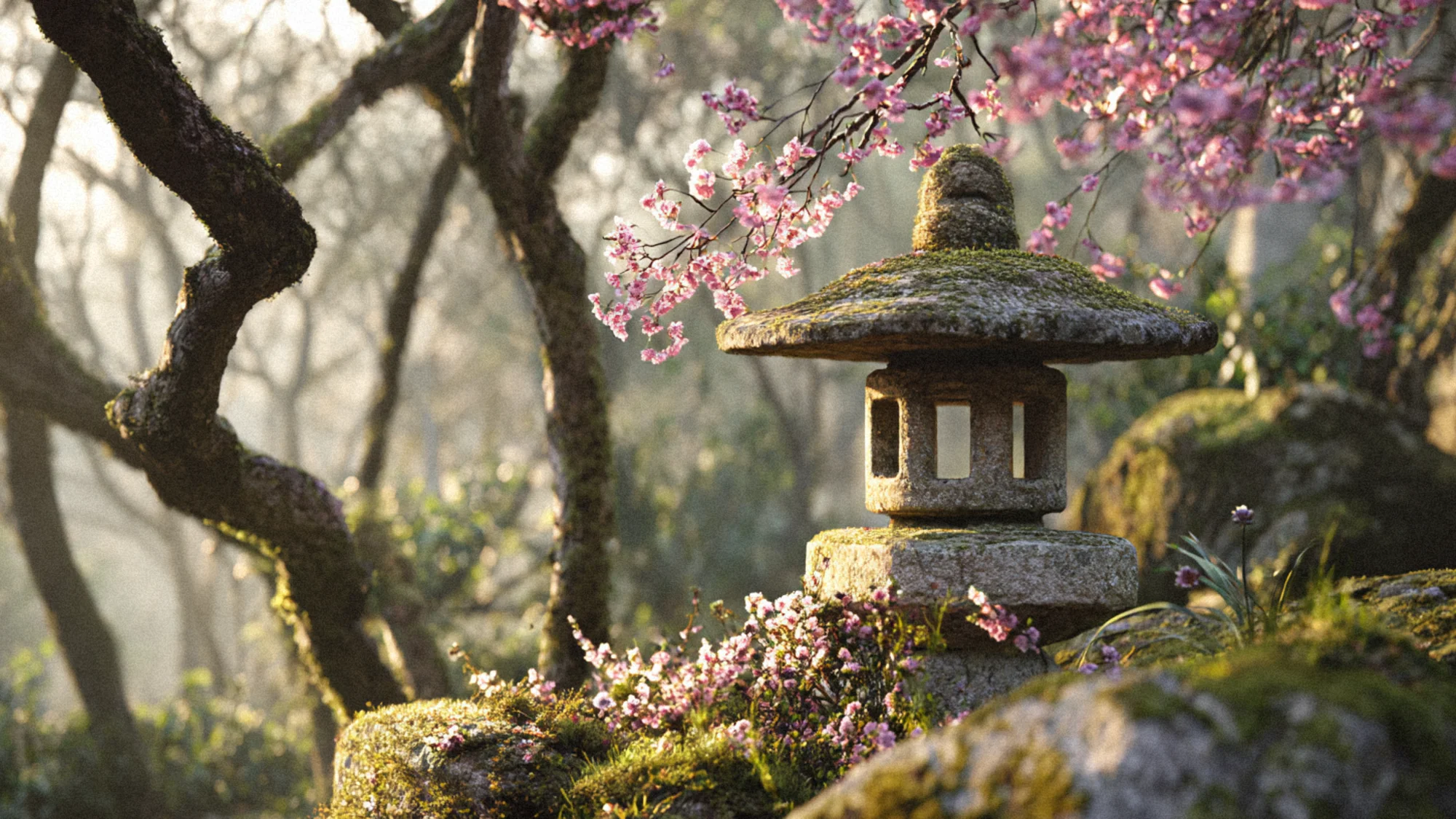
Early-bloom stone garden — a weathered lantern marking the season's first opening
In Tokyo, the official start of spring isn’t declared by politicians or priests. It’s declared by bureaucrats counting blossoms on a single tree at Yasukuni Shrine. Five to six open flowers, and the nation exhales: kaika—the first opening. The season has begun.5
This is what happens when an entire culture decides that one moment—fleeting, uncontrollable, unrepeatable—matters more than everything else on the calendar.
What $9.4 Billion Buys: The Economics of Presence
The bloom lasts two weeks. Fourteen days. Not negotiable.6
And in that narrow window, 63 million people mobilize.7 They pack bullet trains. They book hotels months in advance. They spend an estimated ¥1.39 trillion—$9.4 billion—chasing something you cannot photograph, cannot own, and cannot extend.8
Here’s what economists discovered when they analyzed credit card data during cherry blossom season: “The peak spending days moved from southern Japan northward, coinciding with timings of the peak blooms.”9
Read that again. The entire national economy—transportation, hospitality, retail—synchronizes with a flower.10 Not the other way around.
This is the paradox tourists miss: They see a nation “obsessed with presence, not productivity.” But this is productivity—just pointed at something radical. Japan’s $5 trillion economy doesn’t stop for two weeks. It reorients. It deploys bullet trains, digital payment systems, and military-grade logistics toward a single, pre-modern goal: to be fully present for something that won’t wait for you.11
The anxious question we all carry—Am I missing out?—gets answered here with brutal clarity: Yes. You are. Right now. And in 13 days, the moment will be gone.
The Philosophy You’re Actually Paying For
You’re not buying cherry blossoms. You can see those on Instagram.
You’re buying mono no aware.12
This 18th-century concept, formalized by philosopher Motoori Norinaga, translates inadequately as “the pathos of things” or “an empathy toward ephemera.”13 But its essence is this: Beauty exists not despite impermanence, but because of it.14
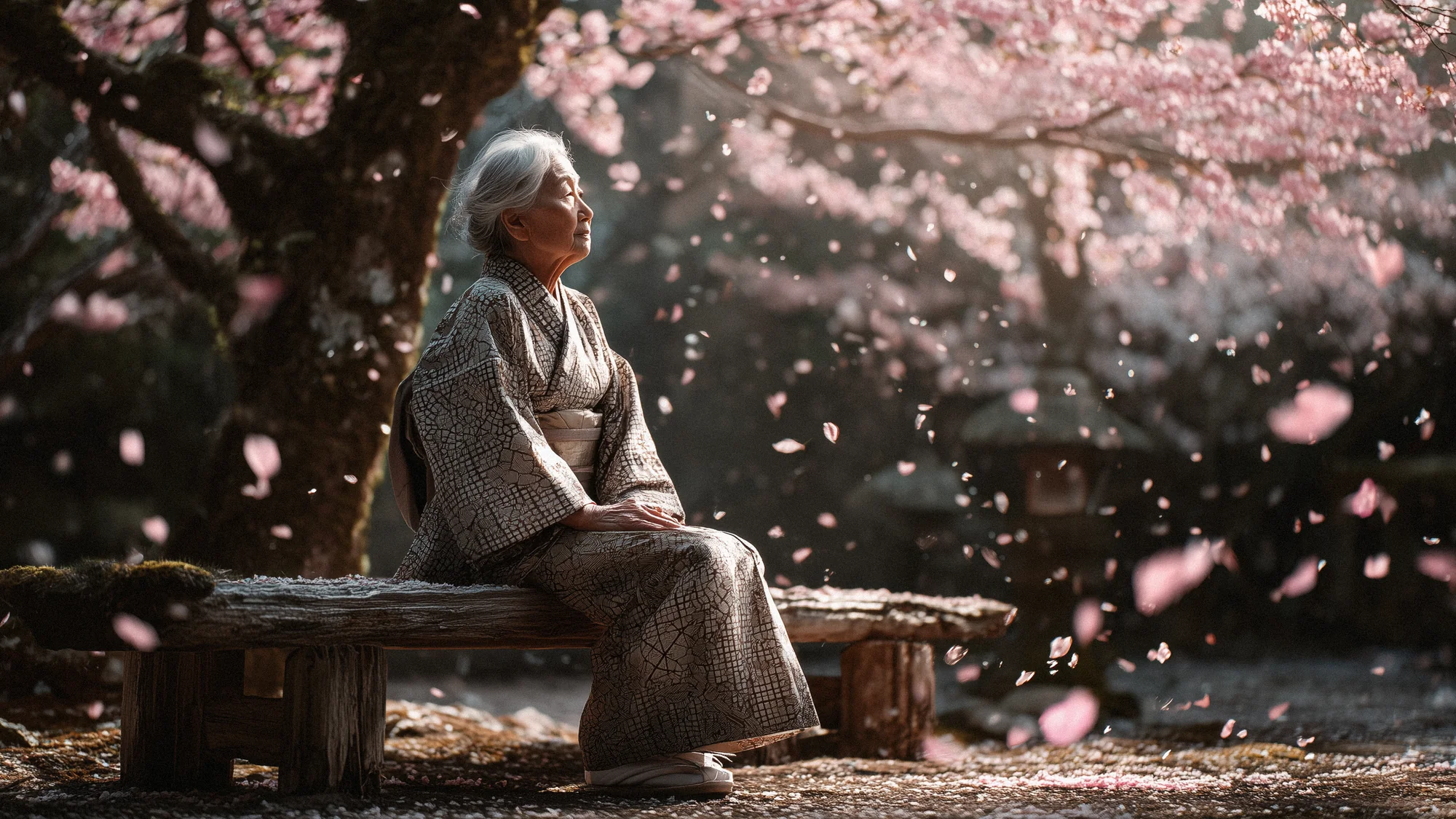
Mono no aware embodied — petals falling as an old woman rests beneath sakura
In the West, we build monuments in stone. We chase permanence. We photograph moments to death trying to hold them. Japan’s most profound aesthetic principle teaches the opposite: The cherry blossom is beautiful because it dies.15
“Our appreciation of its beauty is heightened by our awareness that the blooms will only last a few days. The cherry blossoms would not seem as beautiful to us if we could view them year round.”16
This isn’t sad. It’s a release.
Every anxiety loop you run—the worry about aging, the fear of missing out, the desperate attempt to capture and control moments—is rooted in attachment. In clinging.17 The blossom teaches you something your therapist has been trying to explain for years: Appreciation doesn’t require ownership.18
You cannot own the sakura. You cannot extend its bloom. You can only show up. Sit beneath it. Watch it fall. And let the moment be exactly what it is—full, present, and already disappearing.
The Moment Everyone Gets Wrong
Tourists chase mankai—full bloom. Eighty percent of buds open, Instagram-perfect pink.19
But the Japanese know: That’s not the moment.
The moment is hanafubuki.20
Hana (花): flower. Fubuki (吹雪): blizzard. The “flower snowstorm.”
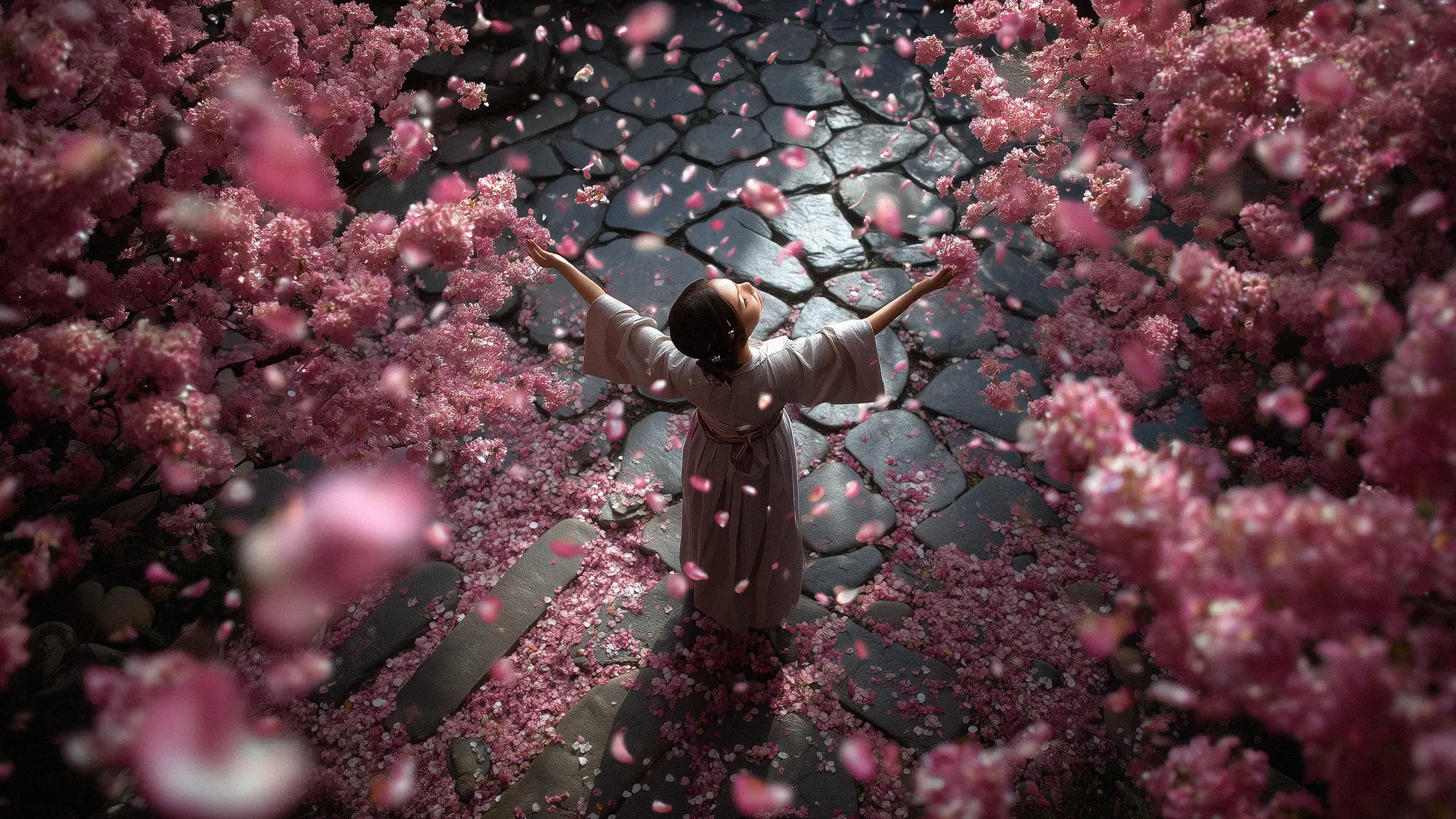
Hanafubuki — the pink snowstorm you have to stand inside
This is the day the petals begin to fall. Not a few. All of them. The air becomes thick with pink snow. The ground becomes a soft carpet. And if you’re standing beneath the tree, petals land in your hair, on your shoulders, on your palms.21
“Hanafubuki is the best part about cherry blossom season in Japan.”22
Why? Because mankai is a photograph. Hanafubuki is an experience. A static bloom is beautiful. A falling one is a metaphor.
A 12th-century poet named Fujiwara no Kintsune stood beneath a cherry tree and watched the petals fall like snow. He wrote:23
“…it is not snow, and what it is that’s scattering are, in fact, the years of my life!”
The falling petals aren’t decoration. They’re you. Your youth. Your plans. Every moment you tried to hold. All of it, beautiful and unstoppable, falling through your fingers.
This is what you cannot experience through a screen. You have to stand in it. Let it land on you. Feel the gentleness of a thousand tiny endings brushing your skin.
What the Samurai Knew About Endings
The cherry blossom carries one more layer of meaning—one that explains why the Japanese relationship with these flowers is so visceral it borders on devotion.
For a thousand years, the sakura was the symbol of the samurai.24 Not because it’s delicate. Because of how it dies.
The blossom doesn’t wilt. It doesn’t cling to the branch, browning and desperate. At peak beauty, it lets go.25 This was the warrior’s ideal: Hana wa sakuragi, hito wa bushi—“The best flower is the cherry blossom, the best person is the warrior.”26
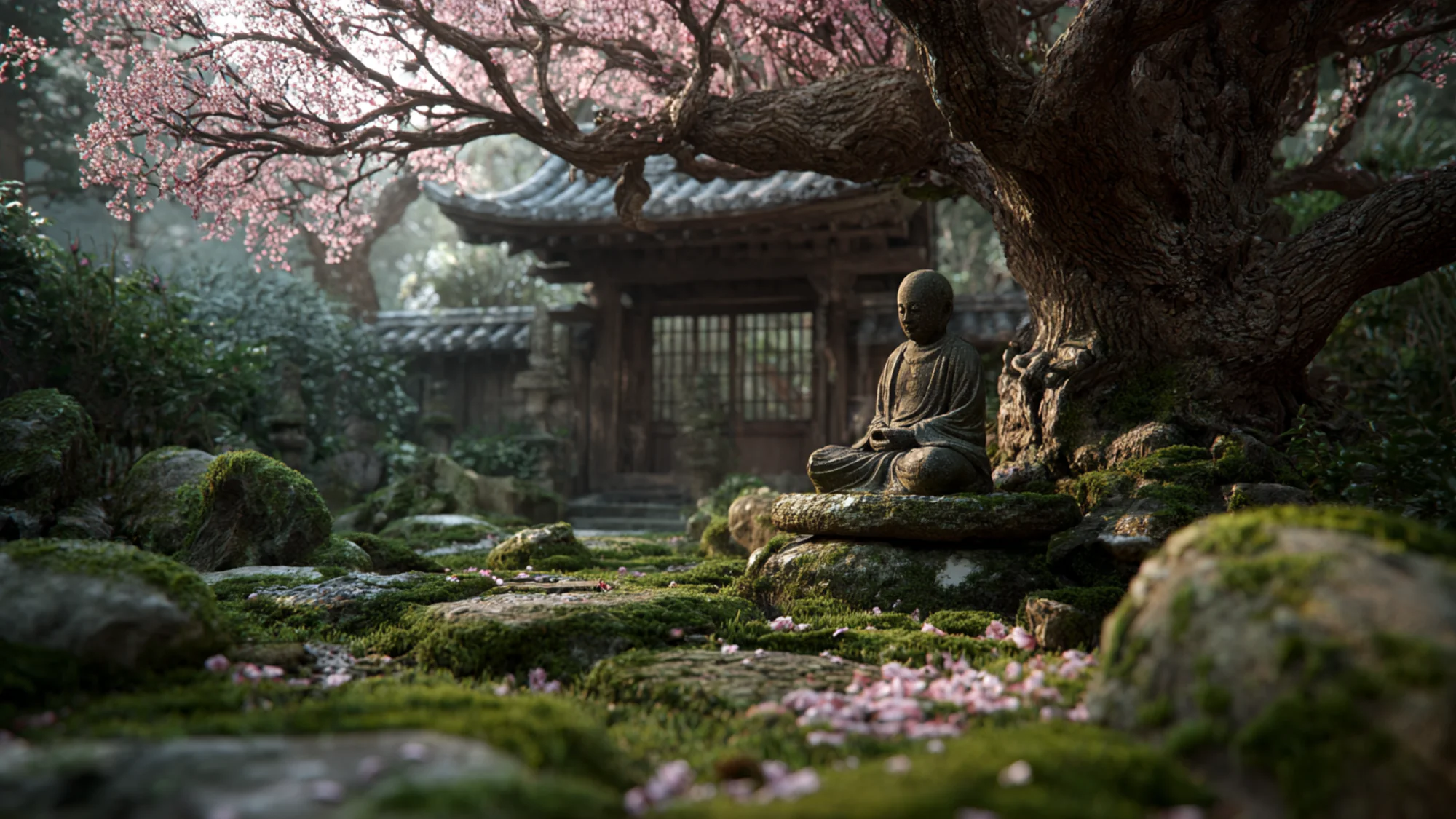
Hana wa sakuragi, hito wa bushi — a beautiful ending, accepted
The poet Saigyō, a 12th-century monk, spent his life wrestling with his overwhelming love for these flowers—a love that contradicted every Buddhist teaching about detachment. He wrote of his inner conflict, his “pulsing heart once dyed in blossoms’ hues,” and ultimately made peace with it through one final poem:27
“I wish to die in spring, under the cherry blossoms, around the time of the full moon.”28
On February 16, 1190, Saigyō died—exactly as he’d written. Under the blossoms. At the full moon.29
This isn’t morbid. It’s the opposite. It’s choosing your relationship with endings. It’s saying: I will not let impermanence terrify me. I will make it beautiful.
What You Bring Home (The Real Conversion)
You will come home with photos. Everyone does. But that’s not what you’ll carry.
You’ll carry a recalibrated nervous system.

What you bring home: a re-synced inner clock and quiet wonder
Modern chronobiology research confirms what the Japanese have practiced for centuries: Human “inner clocks are exquisitely tuned to environmental cues.”30 Your anxiety, your insomnia, your sense of being perpetually out of sync—this is “circadian disruption,” the cost of living by artificial light and the arrhythmic, high-alert ping of notifications.31
The sakurazensen is the opposite of a notification. It’s a natural clock. Slow. Predictable. Collective. Following it for 12 days is what researchers would call a “chrono-intervention”—a deliberate re-synchronization of your internal biology with a massive, external rhythm.32
You’ll also carry a cognitive shift. Neuroscience studies on “meditative self-dissolution” (the practice of deeply contemplating impermanence) show measurable changes: reduced defensiveness toward mortality, decreased rumination, lower attachment-based anxiety.33
Sitting under the sakura for 12 days isn’t metaphor. It’s embodied training. You’re not reading about impermanence. You’re inhabiting it. Watching it fall. Feeling it land on you. And, slowly, the grip loosens—the grip of FOMO, of needing to capture, of fearing what you can’t control.34
The Invitation You Can’t Get Wrong
There’s no wrong time to go to Japan. But there’s only one time to go for this.
The sakurazensen doesn’t negotiate. It doesn’t wait. Each year, the forecast is released in February. The front will begin moving in late March. And by mid-May, it will be over.35
Most people will see the forecast, think “maybe next year,” and return to their scrolling.
But you already know what happens next. Next year, you’ll be one year older. One year deeper into the routines that make you feel like time is slipping away. One year further from the person who still believes a 12-day journey to follow a flower could change something fundamental about how you see your life.
This isn’t about cherry blossoms. It’s about whether you’re willing to stop optimizing long enough to just be—fully, vulnerably present—for something that will not, cannot, wait.
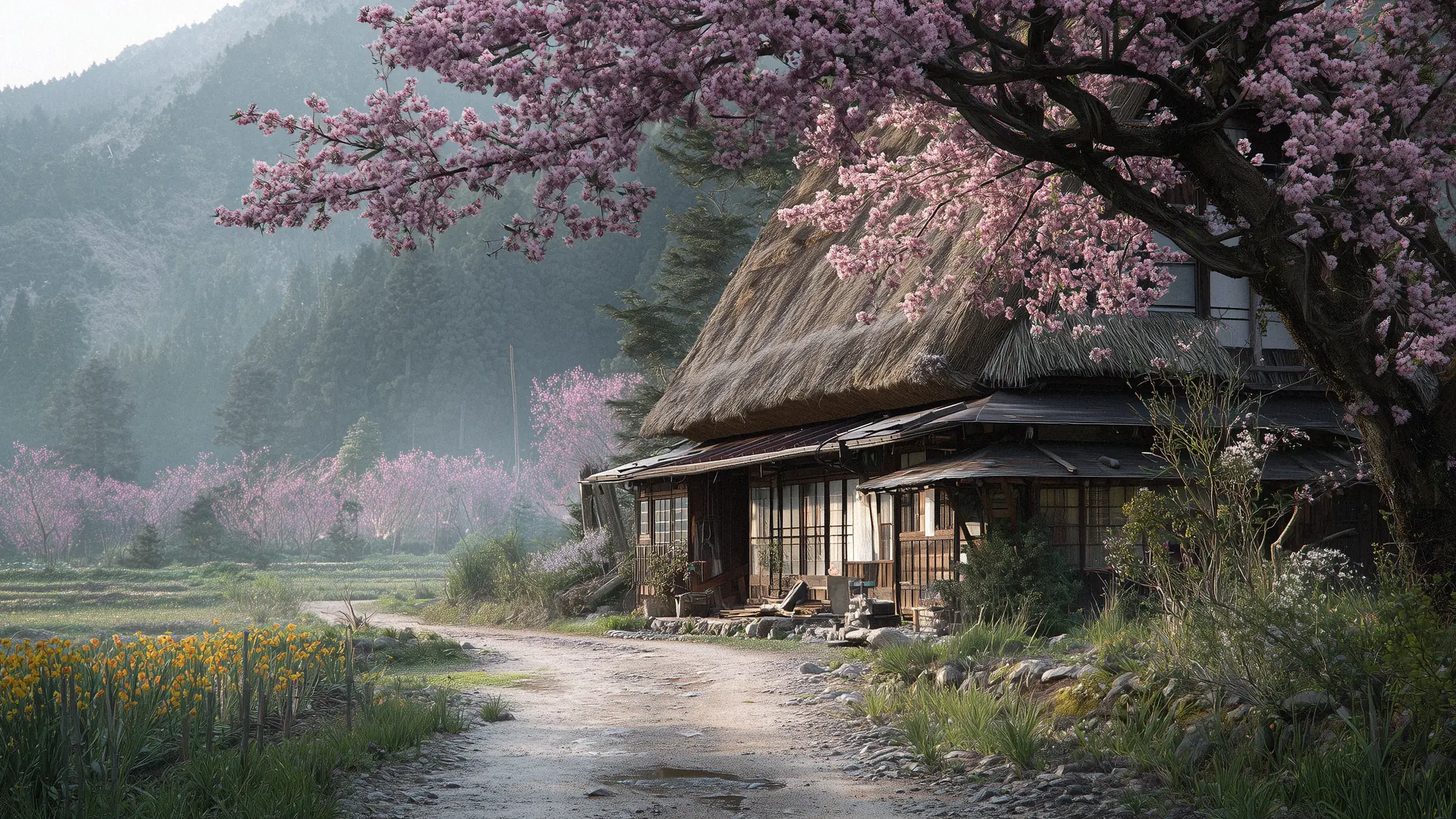
The invitation: show up when the dew and first blossoms say 'now'
The Japanese have a practice for this. They call it hanami. Flower viewing.
But what you’re really viewing is yourself—reflected in something so beautiful and so brief that it forces you to ask the question you’ve been avoiding:
What if the things I’m terrified of losing are only beautiful because they end?
Begin Here
We design journeys that follow the sakurazensen. Not tours. Not itineraries that treat the bloom like a backdrop. We time your arrival to the forecast. We place you in gardens where the only sound is falling petals. We introduce you to the practice of yozakura, to the poetry of Saigyō, to the quiet weight of standing beneath a 200-year-old tree and understanding, maybe for the first time, what it means to let go.
This isn’t for everyone. It’s for the person who suspects that their exhaustion isn’t about working harder—it’s about being perpetually out of sync with anything real.
It’s for the person who’s tired of performing presence and ready to actually feel it.
And it’s for the person who understands: Some things you don’t capture. You just show up.
The front begins moving in 120 days. The window is 14 days wide. And when it closes, it’s gone.
What will you choose?
We Handle Everything. You Just Show Up.
No research. No coordination. No backup plans needed. Just your perfect journey—guaranteed.
Create Your JourneyFootnotes
-
Sakura Zensen: Charting the Cherry Blossom Front — The Rikumo Journal Source ↩
-
Cherry blossoms arrive on schedule in Tokyo—NHK WORLD-JAPAN NEWS Source ↩
-
Release of 2025 Cherry Blossom Forecast (14th forecast) | 日本気象株式会社 Source ↩
-
Sakura Zensen: The Magic of Japan’s Cherry Blossom Forecast - Miles from Home Source ↩
-
Sakura Zensen: Charting the Cherry Blossom Front — The Rikumo Journal Source ↩
-
Hanami season to have record ¥1.39 trillion economic impact on Japan Source ↩
-
Tourist expenditures blossom by 50% in Japan as Sakura blooms: Visa Source ↩
-
Beyond the Bloom: How the Sakura season created an economic boost to Japan | Visa Source ↩
-
Japan’s Double-Edged Sword: The Hidden Costs of Japan’s Tourism Surge - Princeton Political Review Source ↩
-
Mono no aware | Editor’s Column “The Path of Japanese Crafts” Part1 - kogei standard Source ↩
-
Mono No Aware: Beauty and Impermanence in Japanese Philosophy - Philosophy Break Source ↩
-
Mono no Aware: Aesthetics of a Fleeting Word - TOKI Source ↩
-
Untranslatable Words: Mono No Aware, and the Aesthetics of Impermanence - UTC Source ↩
-
How to Accept the Impermanence of Life: A Buddhist Take Source ↩
-
Mono No Aware: The Secret Key to an Intentional Life - Stephan Joppich Source ↩
-
The Scattering Years of My Life: Poem 96 – The Hyakunin Isshu Source ↩
-
Cherry Trees in Japanese Folklore - Brooklyn Botanic Garden Source ↩
-
The cultural significance of cherry blossoms in Japan | Watts Gallery Source ↩
-
“The Journey Itself Home”: Wandering Buddhist Poets of Japan - University of Pennsylvania Source ↩
-
“Please, I want to die under the cherry blossoms…” by Saigyo Source ↩
-
“Please, I want to die under the cherry blossoms…” by Saigyo Source ↩
-
Health, Disease, and Chronobiology | Harvard Medicine Magazine Source ↩
-
Role of Chronobiology as a Transdisciplinary Field of Research - NIH Source ↩
-
Training the embodied self in its impermanence - PubMed Central Source ↩
-
Managing Anxiety by Embracing Impermanence - The South Carolina Counseling Association Source ↩
